
Overview
This article examines nine critical user experience (UX) failures that adversely affect direct-to-consumer (DTC) brand sales, while also proposing effective strategies for improvement. It asserts that resolving issues such as confusing navigation, slow loading times, and inadequate error handling can significantly enhance conversion rates and customer satisfaction. This assertion is supported by compelling case studies and statistics that illustrate the financial advantages of an optimized UX. By addressing these UX failures, brands not only improve their sales performance but also foster a more satisfying customer journey.
Introduction
In the fiercely competitive landscape of direct-to-consumer (DTC) brands, user experience (UX) stands as a decisive factor that can either propel or hinder sales. As online shopping continues its rapid ascent, consumers have come to expect seamless interactions and intuitive interfaces. This expectation underscores the necessity for brands to identify and rectify prevalent UX pitfalls. This article meticulously examines nine critical UX fails that can significantly impede DTC sales, offering actionable insights and strategies for improvement.
How can brands adeptly transform these challenges into opportunities for growth and enhanced customer loyalty?
Parah Group: Enhancing UX to Boost DTC Brand Sales
Parah Group stands at the forefront of enhancing user experience (UX) for direct-to-consumer (DTC) companies, specializing in strategies that not only drive sales but also improve profitability. By harnessing data-driven insights and consumer psychology, Parah Group adeptly identifies critical areas where UX fails can be optimized. This comprehensive approach guarantees that every touchpoint in the customer journey is meticulously crafted to boost engagement and conversion, ultimately culminating in heightened sales figures for DTC companies.
Clients of Parah Group have reported an impressive average increase of 36% in ROI on advertising following UX optimizations. For example, a $30M apparel company witnessed a remarkable 35% surge in conversion rates after implementing a redesigned homepage that effectively highlighted social proof and optimized product pricing. Additionally, continuous A/B testing—a cornerstone of Parah Group's strategy—has demonstrated an average conversion rate increase of 21%.
In another case, a cleaning product company experienced an 80% rise in average order value (AOV) by strategically testing free shipping thresholds and introducing product bundles. With over 75% of LA's DTC eCommerce traffic being mobile, Parah Group emphasizes that if mobile UX fails, it will not meet consumer expectations and will struggle to navigate market dynamics.
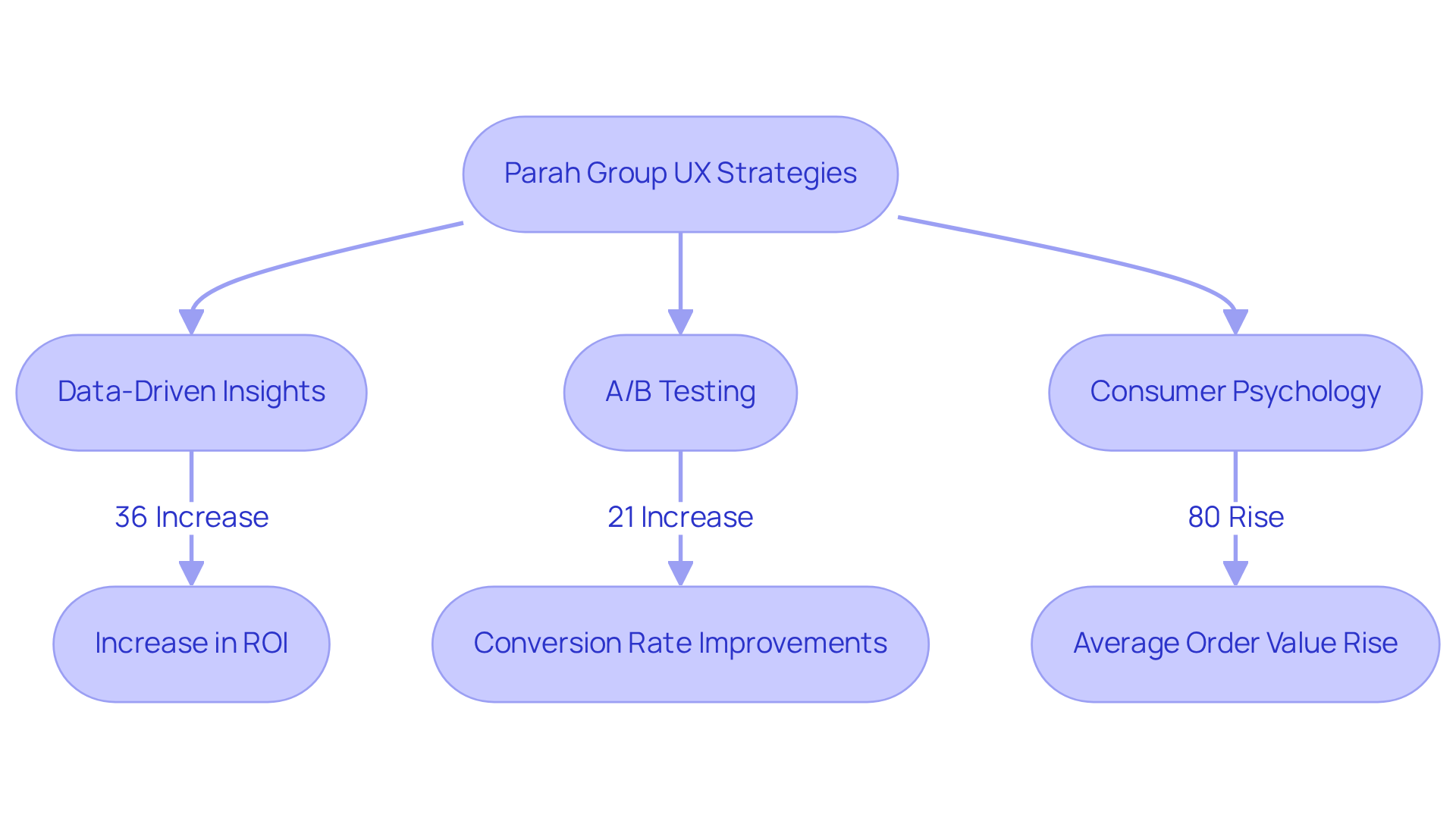
Information Overload: Simplifying User Interfaces
The occurrence of ux fails due to information overload significantly hinders potential customers from completing purchases. To address this challenge, DTC brands must prioritize simplifying their interfaces by concentrating on essential information and reducing distractions. This can be achieved by employing:
- Clear headings
- Concise text
- Intuitive layouts that guide individuals effortlessly through their shopping experience
Research indicates that a well-designed interface can increase conversion rates by up to 200 percent, underscoring the significance of a streamlined approach. For instance, Amazon's intuitive interface, which features tailored suggestions and a smooth checkout process, has established a high benchmark for ecommerce UX, facilitating easy product discovery and transaction completion.
Furthermore, SchoolLockers.com has implemented a well-structured navigation menu that enhances the experience by enabling individuals to explore various product categories effortlessly. By decreasing cognitive load and boosting readability, companies not only enhance the customer experience but also empower customers to make informed buying choices. Notably, 74% of surveyed consumers have abandoned purchases in the last three months because of ux fails, highlighting the urgency for brands to simplify their interfaces.
Parah Group's method for Conversion Rate Optimization outlines a comprehensive strategy that aligns paid advertisements with landing pages, ensuring that interfaces are both appealing and effective. Ultimately, simplifying user interfaces is a strategic imperative for driving growth in the competitive DTC landscape.
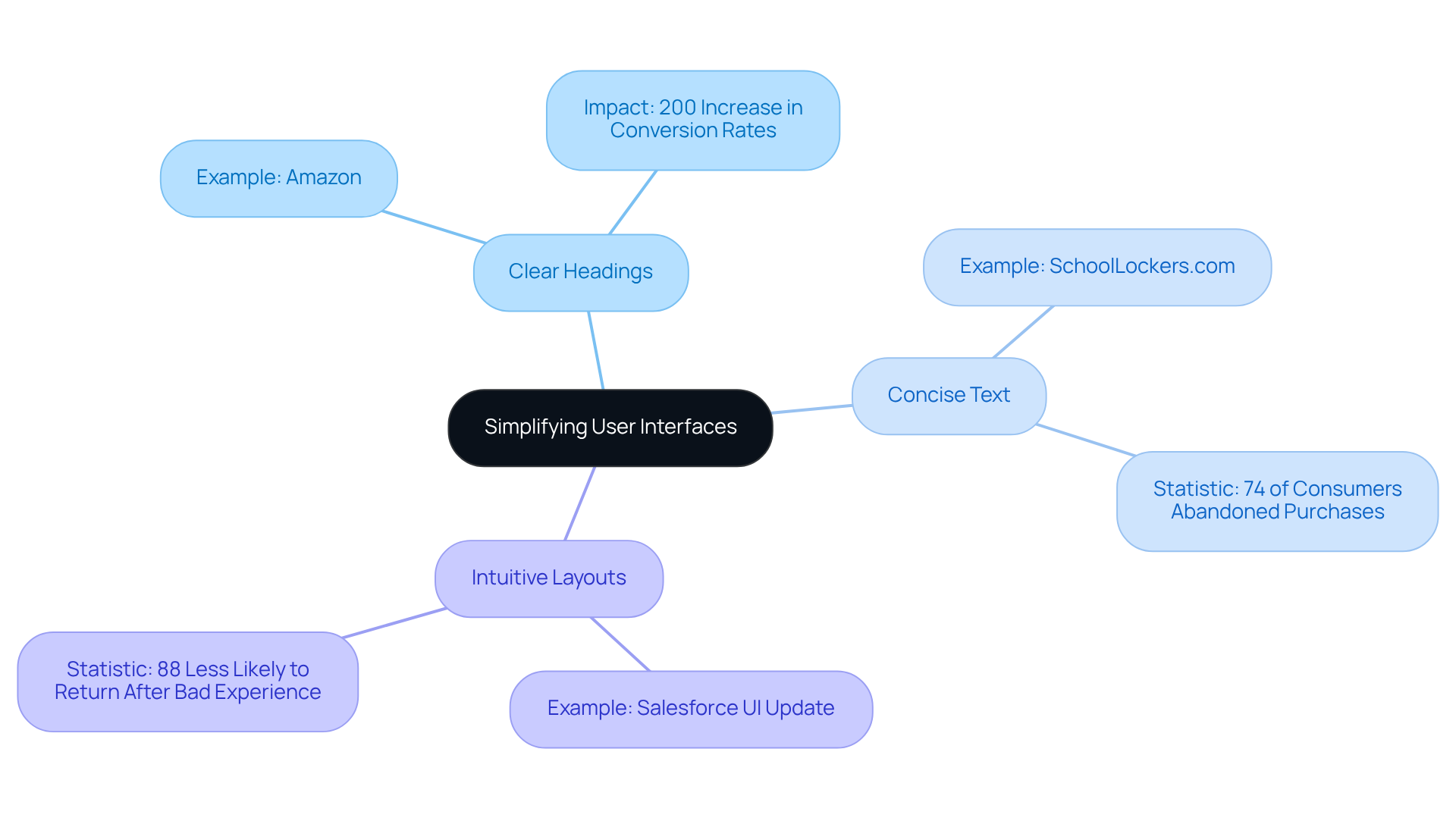
Neglecting Mobile Optimization: A Missed Sales Opportunity
In today's mobile-focused shopping environment, neglecting mobile optimization can significantly hinder sales for DTC companies. With around 70% of eCommerce traffic stemming from mobile devices, it is imperative for brands to ensure their websites are not only responsive but also user-friendly on these platforms. Key strategies include:
- Optimizing images for faster loading
- Simplifying navigation to enhance user experience
- Implementing mobile wallet integrations to streamline checkout processes
- Utilizing gamification techniques to engage consumers
Brands that invest in these optimizations can anticipate a substantial increase in conversion rates, as mobile-optimized sites convert over 100% better than their non-optimized counterparts. Furthermore, data illustrates that mobile app users convert at rates 2-3 times higher than mobile web shoppers, underscoring the necessity for a seamless mobile experience.
For instance, Parah Group's collaboration with a $30M clothing label led to a 35% increase in conversion rates after introducing a revamped homepage that prioritized social proof, optimized product pricing, and included post-purchase upsells. As we advance through 2025, the focus on mobile shopping trends will only intensify, making it crucial for DTC companies to adapt and thrive in this evolving market. To bolster your mobile optimization efforts, consider conducting regular participant testing to pinpoint pain points and areas for enhancement.
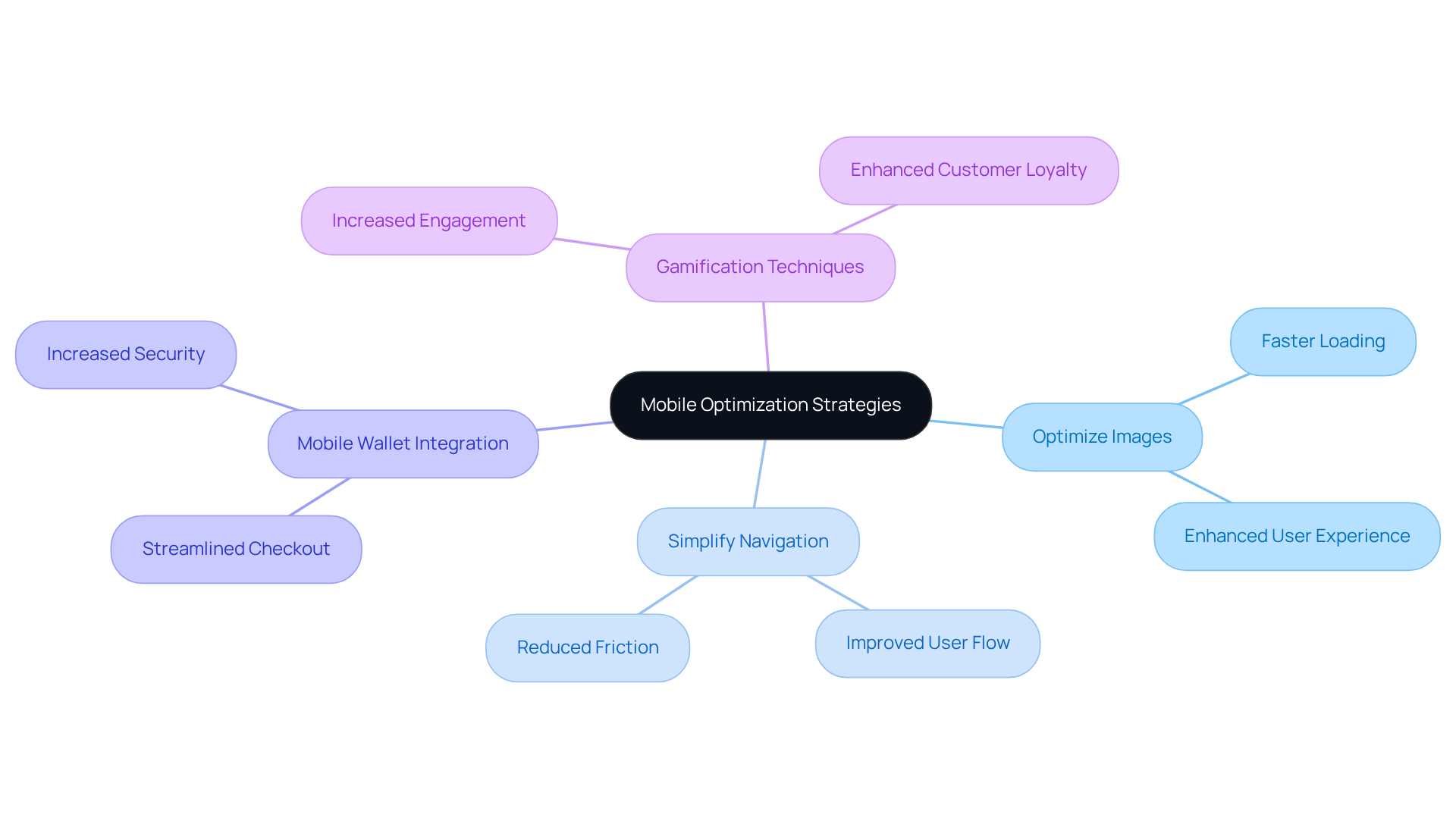
Confusing Navigation: Streamlining User Journeys
Confusing navigation can cause ux fails that significantly frustrate customers and lead to abandoned carts, which is detrimental to DTC brands. Prioritizing a clear and intuitive navigation structure is essential for allowing individuals to locate products effortlessly. This can be accomplished by:
- Logically organizing categories
- Employing descriptive labels
- Integrating a robust search function
Research indicates that 25% of individuals abandon their purchases due to ux fails in complex navigation, underscoring the need for simplicity. Simplifying customer journeys improves the overall shopping experience and motivates individuals to finalize their purchases, ultimately increasing sales.
Implementing effective navigation strategies, such as:
- Breadcrumb trails
- Faceted navigation
can further reduce cart abandonment rates and enhance conversion rates for DTC companies. As demonstrated in our case studies, companies that have enhanced their navigation and experience for visitors have observed considerable advancements in their conversion rates and revenue per visitor. For instance, a $30M clothing label that redesigned its homepage to emphasize social proof and simplify navigation experienced a 35% rise in conversion rates.
Consistently evaluating your navigation framework to confirm it satisfies customer needs is essential for preserving an efficient online shopping experience. Parah Group's holistic approach to CRO includes rigorous testing and alignment of strategies, ensuring that navigation improvements are integrated with overall marketing efforts.
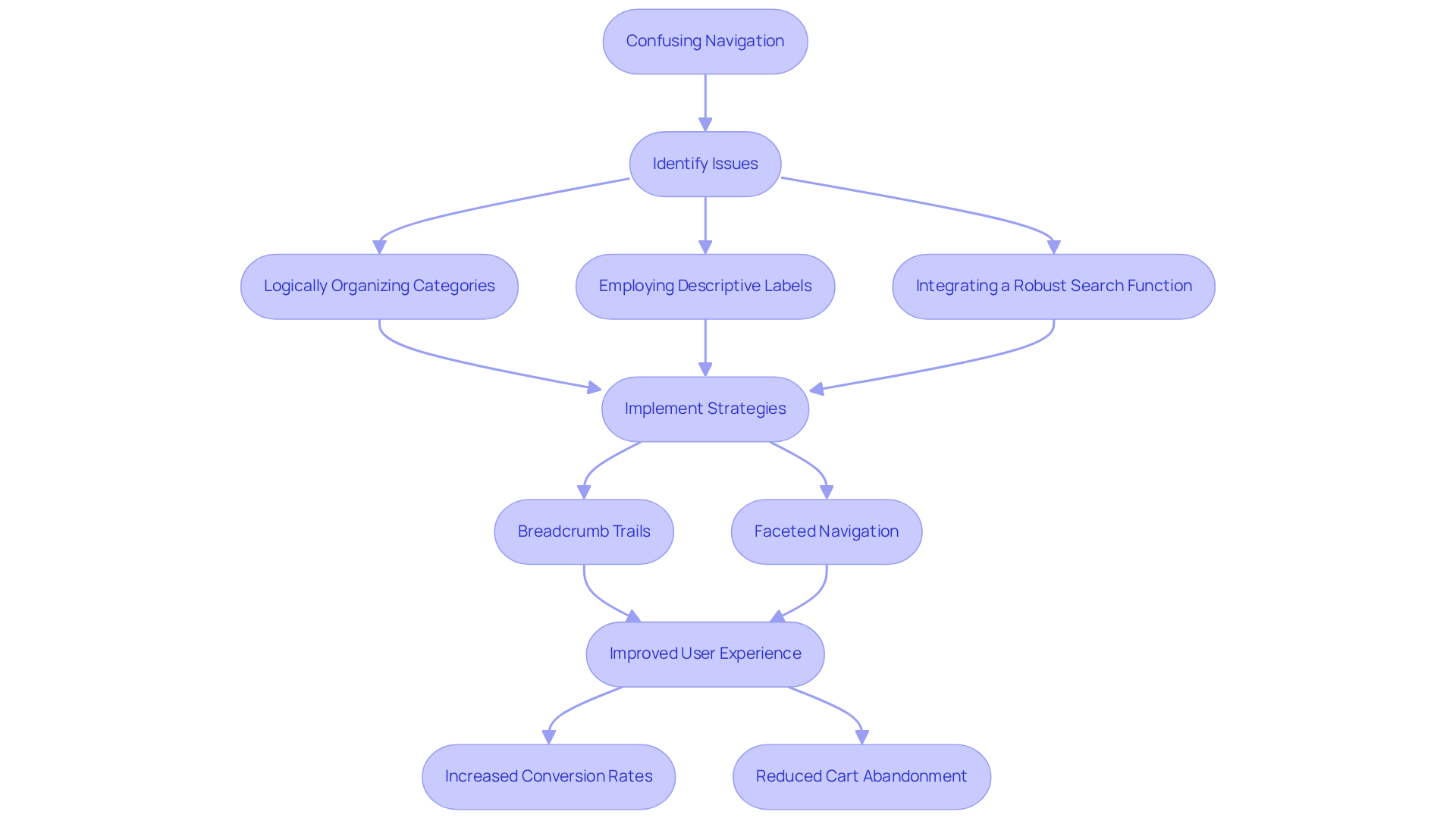
Ignoring User Feedback: The Cost of Disconnection
Ignoring customer input can significantly undermine a company's success. Direct-to-consumer (DTC) brands must proactively seek and analyze client insights to identify pain points and uncover opportunities for enhancement. Brands that effectively implement feedback from clients often experience a substantial increase in performance metrics, with studies indicating that those who prioritize consumer insights can achieve conversion rates up to 50% higher than their less responsive counterparts.
Implementing changes based on user insights not only enhances the overall experience but also fosters a deeper sense of connection and loyalty among clients. Regularly conducting surveys and utilizing feedback forms can yield invaluable data that informs user experience (UX) strategies. Experts emphasize that cultivating a feedback culture can lead to innovative solutions that resonate with clients, ultimately boosting sales and improving reputation.
Moreover, successful DTC companies have demonstrated that incorporating consumer feedback into their design processes can yield significant enhancements. For instance, Parah Group assisted a $30 million apparel company in redesigning its homepage based on user insights, resulting in a notable increase in conversion rates. This exemplifies the tangible benefits of attentively listening to clients and making necessary adjustments.
To effectively gather and assess client feedback, companies should employ a variety of techniques, such as:
- Exit surveys
- Direct interviews
- Social media monitoring
By leveraging these insights, businesses can make informed decisions that enhance client experience and align their offerings with consumer expectations, ensuring sustained growth and loyalty in a competitive market. Disregarding customer feedback can result in UX fails, leading to lost sales and a diminished reputation, making it crucial for DTC companies to prioritize this essential aspect of their strategy.
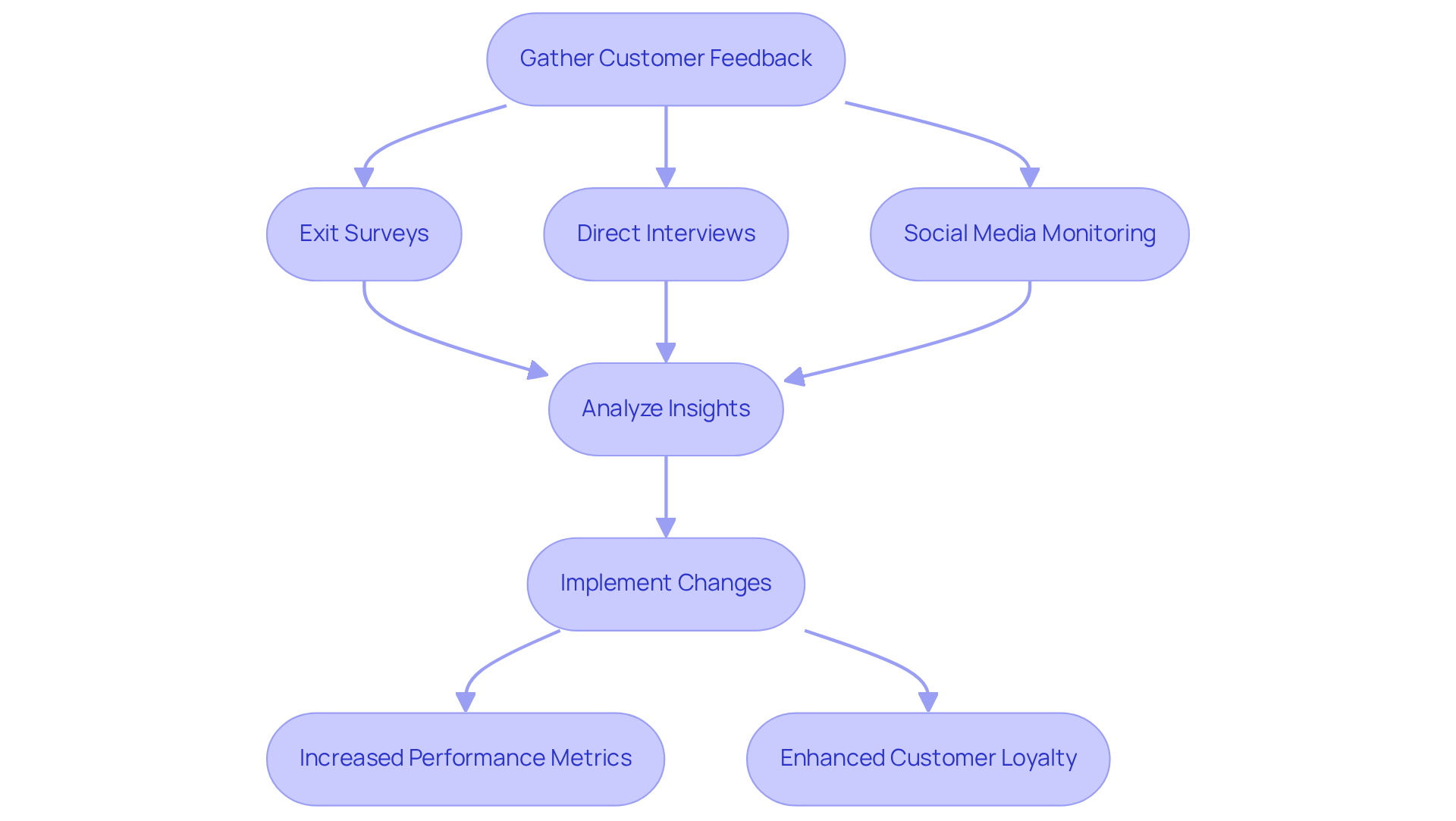
Poor Error Handling: Frustrating Users at Checkout
Ineffective error management during the checkout process can cause major UX fails, often leading to abandoned carts. Research indicates that 40% of online stores encounter UX fails due to not implementing real-time formatting for credit card numbers, which complicates the verification process and increases the likelihood of errors. To address this challenge, DTC brands must prioritize clear and informative error messages that not only identify issues but also direct individuals toward solutions. For instance, suggesting alternative payment methods or clarifying input requirements can enhance the overall checkout experience.
Experts emphasize that a well-designed error messaging system minimizes cognitive load and builds trust, leading to smoother transactions. A 2022 Stripe report revealed that over half of buyers abandon their purchases if the checkout process exceeds two minutes, underscoring the critical need for efficiency. Furthermore, 25% of customers abandon their carts due to concerns about payment security, while 17% leave due to a lack of trust in the site, often resulting in UX fails exacerbated by unclear error messages.
Implementing proactive error handling strategies, such as inline validation that provides immediate feedback on input mistakes, can significantly reduce friction. This approach not only improves user satisfaction but also fosters higher conversion rates. For instance, in a case study with a $30M clothing line, optimizing the checkout process led to a remarkable 35% increase in conversion rates. By addressing common pain points and ensuring that error messages are specific and actionable, DTC companies can create a more seamless and trustworthy checkout experience. Parah Group's extensive CRO strategies demonstrate that improving the checkout process is essential for maximizing profitability and boosting client loyalty, ultimately increasing sales and strengthening the organization's growth trajectory.
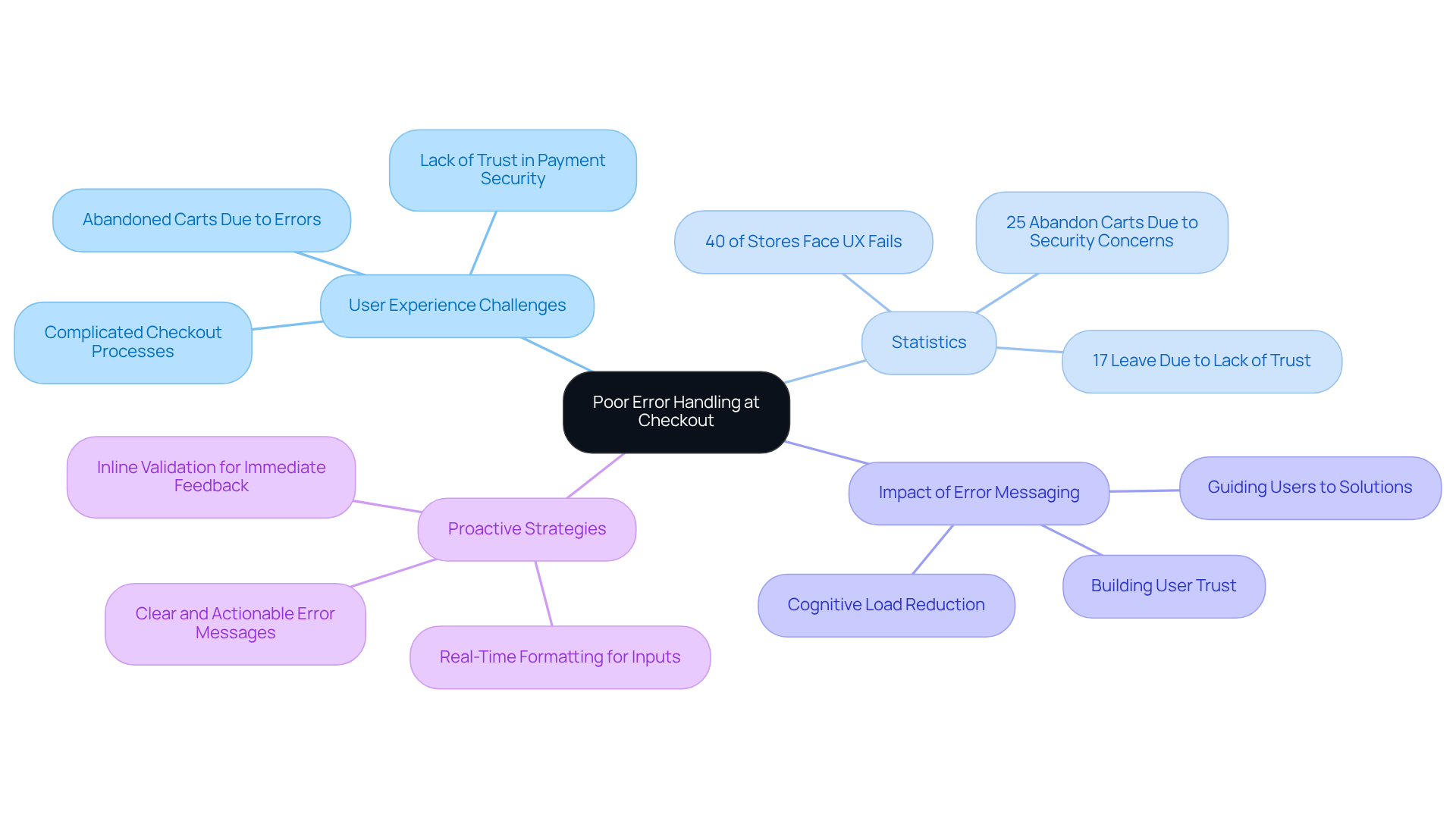
Slow Loading Times: A Barrier to Sales
Slow loading times lead to UX fails that pose a significant barrier to sales, with studies revealing that 67% of shoppers abandon their carts due to sluggish website performance. Direct-to-consumer (DTC) companies must prioritize website speed optimization to retain customers and enhance conversions.
To prevent UX fails, effective strategies include:
- Compressing images to reduce file sizes
- Minimizing code to streamline loading processes
- Leveraging content delivery networks (CDNs) to improve access speed
A fast-loading site not only elevates the visitor experience but also enhances search engine rankings, leading to increased traffic and potential sales. In fact, research indicates that a mere 1-second delay in page load time can result in a 7% loss in conversions, emphasizing that UX fails can severely impact speed in today’s competitive digital landscape.
Furthermore, studies show that slow-loading websites can lead to UX fails, causing an annual loss of $2.6 billion in sales and emphasizing the financial ramifications of neglecting speed optimization. Notably, 73.4% of users consider website speed important or very important to their online shopping experience, emphasizing that UX fails can create urgency for DTC companies to enhance their site performance.
A case study involving a $30M clothing label illustrates this point: optimizing website elements—including speed, homepage redesign, and social proof—resulted in a remarkable 35% increase in conversion rates. This clearly demonstrates that speed is not merely a technical requirement but a vital factor in driving revenue growth, as neglecting it may lead to UX fails.
As Isabella Edwards aptly states, "Speed is the currency of the internet," making it essential for companies to regularly test and optimize their website speed to maintain a competitive edge.

Neglecting Accessibility: Excluding Potential Customers
Neglecting accessibility can result in UX fails that alienate a significant portion of prospective clients. DTC companies must ensure their websites are inclusive for all users, particularly those with disabilities. Implementing web accessibility guidelines is essential; this includes:
- Providing alt text for images
- Ensuring keyboard navigation
- Utilizing effective color contrast
As Global Reach states, "Investing in web accessibility isn't just about avoiding legal trouble; it's a strategic decision with significant business benefits." By prioritizing accessibility, companies not only enhance their reputation but also foster loyalty among a diverse clientele.
With approximately 26% of the adult population in the U.S. living with disabilities, addressing these needs can significantly expand market reach and improve overall customer satisfaction. Furthermore, accessible websites can lead to an average organic traffic increase of 12%, demonstrating the tangible benefits of inclusive design. Brands should also be aware that neglecting accessibility can result in UX fails and expose them to legal risks. Therefore, it is crucial to conduct a website accessibility audit to ensure compliance with standards.

Inconsistent UI Elements: Creating User Confusion
When DTC brands do not maintain uniformity in design components such as buttons, fonts, and colors across their websites, it can lead to confusion and erode trust, indicating that ux fails. A cohesive design not only elevates aesthetic appeal but also facilitates intuitive navigation, significantly improving the experience for individuals.
Studies indicate that:
- 70% of individuals prefer platforms where navigation elements remain consistent.
- Businesses with uniform branding can experience a 20% increase in revenue.
By creating a consistent visual language, companies can enhance consumer confidence, promote repeat visits, and ultimately boost sales. Successful DTC companies demonstrate that emphasizing design consistency mitigates ux fails, fostering enhanced trust and loyalty from customers, and reinforcing the notion that a well-crafted interface is crucial for optimizing conversion rates.
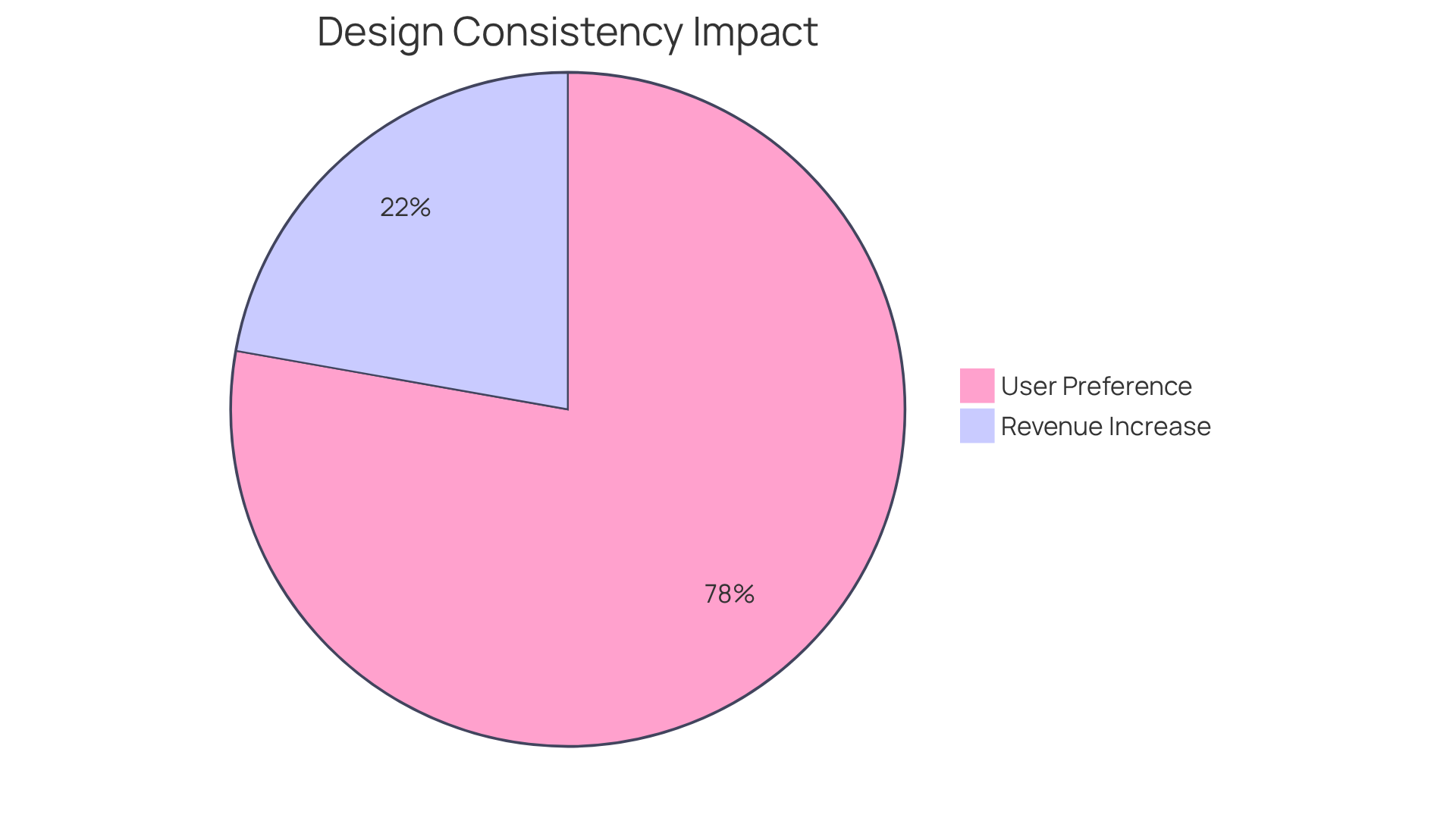
Overlooking UX Writing: The Importance of Clear Communication
Neglecting UX writing can result in UX fails that lead to confusion and frustration for users, ultimately hindering sales for DTC brands. Prioritizing clear and concise messaging across websites—particularly in calls to action and product descriptions—is crucial for maximizing profitability through comprehensive Conversion Rate Optimization (CRO) strategies. Effective UX writing serves as a guiding force, helping users understand product advantages and navigate the site with ease.
For instance, Nike's e-commerce platform exemplifies straightforward and impactful UX writing that highlights key actions and benefits. Similarly, Airbnb employs clear communication regarding pricing and features to foster trust and boost engagement.
Research shows that users are more likely to engage with concise calls to action; a study by Torrey Podmajersky reveals that two-word prompts yield significantly higher click-through rates. By investing in high-quality UX writing that avoids technical jargon and utilizes plain language, companies can greatly reduce the risk of UX fails, thereby enhancing user engagement and driving conversions.
This approach not only transforms casual visitors into loyal customers but also aligns with proven strategies for revenue growth and profitability enhancement, as evidenced by successful case studies from Parah Group, where brands experienced up to a 35% increase in conversion rates through optimized UX writing.
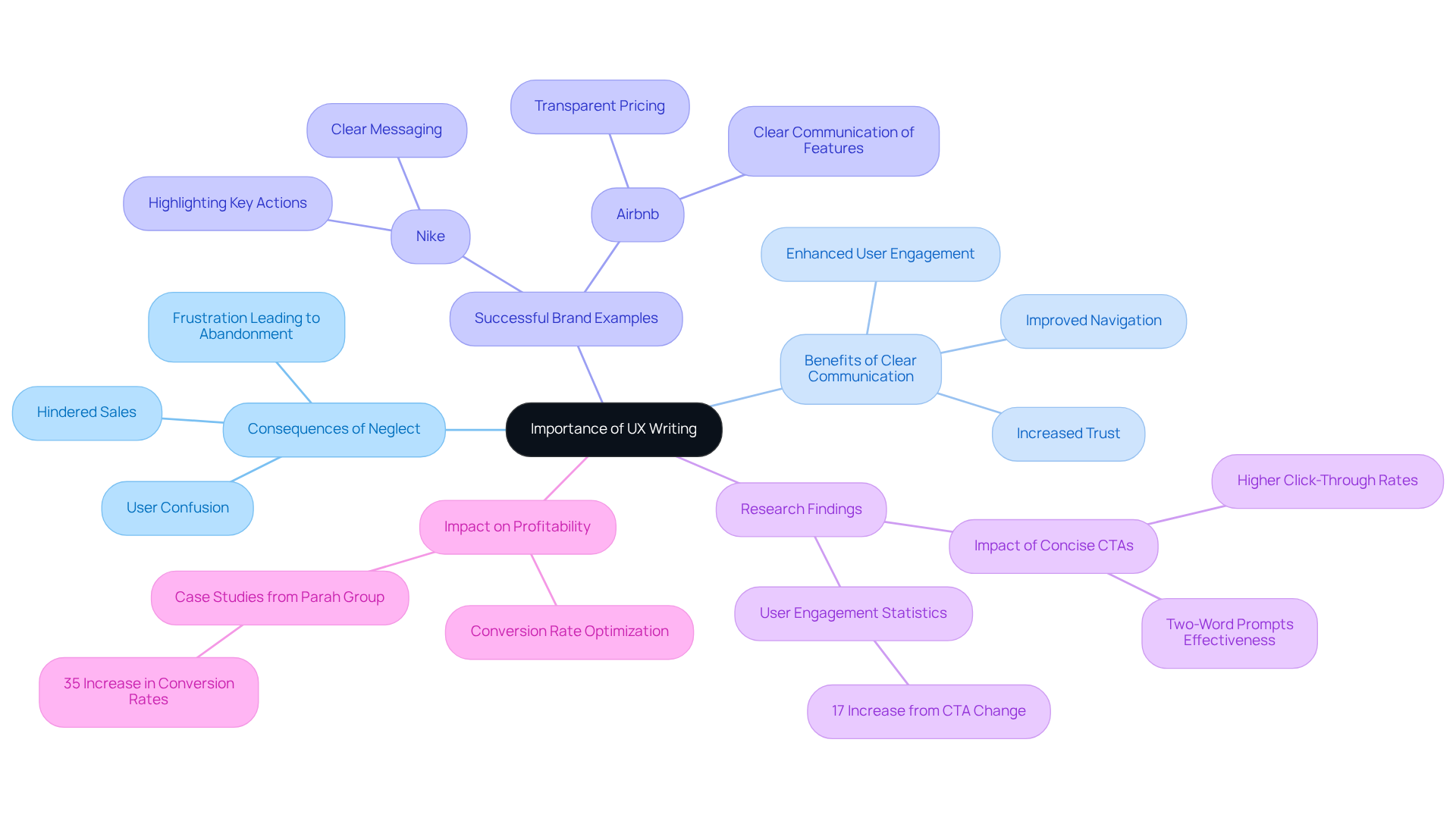
Conclusion
Enhancing user experience (UX) is not merely a trend; it is an essential requirement for direct-to-consumer (DTC) brands striving to increase sales and cultivate customer loyalty. By addressing prevalent UX pitfalls, such as:
- Information overload
- Inadequate mobile optimization
- Perplexing navigation
brands can foster a more engaging and efficient shopping experience. This strategy ultimately results in heightened conversion rates and improved customer satisfaction, underscoring the significance of a meticulously structured UX strategy.
The article delineates several pivotal strategies for surmounting UX challenges, including:
- The simplification of user interfaces
- Optimization for mobile devices
- The active solicitation of user feedback
By adopting these methods, DTC companies can markedly diminish cart abandonment rates and enhance overall performance. Case studies illustrate that brands prioritizing UX enhancements frequently observe substantial returns on investment, with some witnessing conversion rate increases of up to 35% following necessary adjustments.
In an intensely competitive digital landscape, prioritizing user experience is vital for sustaining growth and capturing market share. DTC brands must acknowledge that investing in UX transcends aesthetics; it encompasses the creation of a seamless, accessible, and enjoyable shopping journey for all customers. By proactively addressing UX shortcomings, brands can not only amplify sales but also forge enduring relationships with their clientele, thereby ensuring long-term success in the dynamic e-commerce environment.
Frequently Asked Questions
What does Parah Group specialize in?
Parah Group specializes in enhancing user experience (UX) for direct-to-consumer (DTC) companies, focusing on strategies that drive sales and improve profitability through data-driven insights and consumer psychology.
How does Parah Group improve sales for DTC brands?
Parah Group improves sales by identifying critical areas where UX can be optimized, ensuring that every touchpoint in the customer journey is crafted to boost engagement and conversion.
What kind of ROI have clients of Parah Group reported after UX optimizations?
Clients of Parah Group have reported an average increase of 36% in ROI on advertising following UX optimizations.
Can you provide an example of a successful UX optimization by Parah Group?
A $30M apparel company experienced a 35% surge in conversion rates after implementing a redesigned homepage that highlighted social proof and optimized product pricing.
What is the impact of continuous A/B testing according to Parah Group's strategy?
Continuous A/B testing has demonstrated an average conversion rate increase of 21%.
How significant is mobile optimization for DTC companies?
Mobile optimization is crucial as around 70% of eCommerce traffic comes from mobile devices. Neglecting it can significantly hinder sales.
What strategies can DTC brands use to optimize mobile experiences?
Key strategies include optimizing images for faster loading, simplifying navigation, implementing mobile wallet integrations, and utilizing gamification techniques.
What effect does mobile optimization have on conversion rates?
Mobile-optimized sites convert over 100% better than non-optimized counterparts, and mobile app users convert at rates 2-3 times higher than mobile web shoppers.
What are the consequences of information overload on UX?
Information overload can hinder potential customers from completing purchases, leading to increased abandonment rates. Research shows that 74% of surveyed consumers have abandoned purchases due to UX fails.
How can DTC brands simplify their user interfaces?
DTC brands can simplify their interfaces by focusing on clear headings, concise text, and intuitive layouts that guide users through their shopping experience.
What is the significance of a well-designed interface in eCommerce?
A well-designed interface can increase conversion rates by up to 200%, highlighting the importance of a streamlined approach to UX.
FAQs











